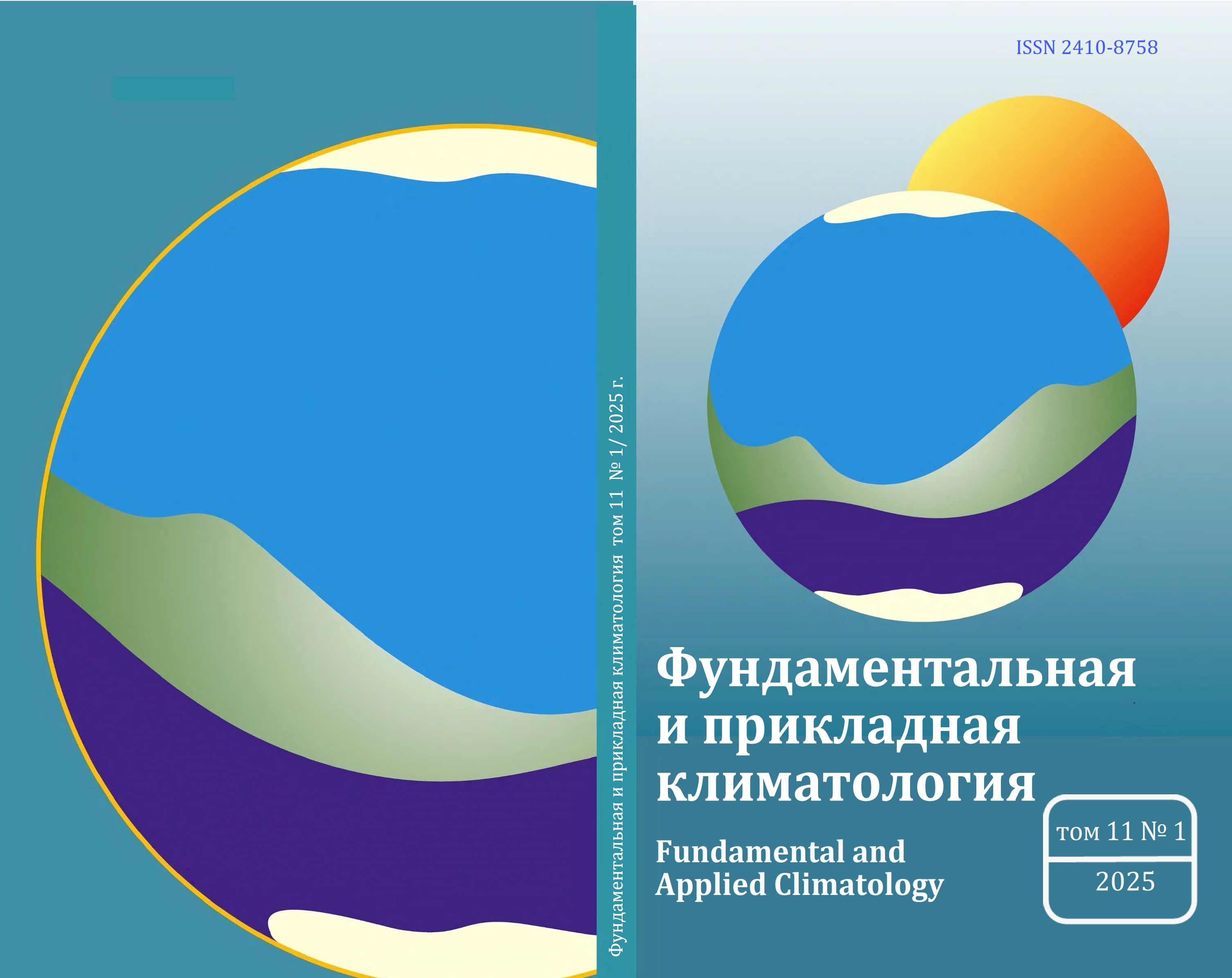Spatio-temporal distribution of climate-active substances ̶ formaldehyde, sulfur dioxide and nitrogen dioxide ̶ in the atmosphere of the Volga Federal District
Keywords:
Atmosphere, pollutants, formaldehyde, sulfur dioxide, nitrogen dioxide.Abstract
The problem of atmospheric air quality is one of the main
environmental challenges of our time, being in the center of attention of specialists
and international organizations. This paper presents a study of the spatio-temporal
distribution of impurities in the atmosphere in the Volga Federal District (VFD)
based on EAC4 (CAMS) reanalysis data for the period 2003-2022. The pollutants
selected based on information published in annual environmental reviews by
regional divisions of Roshydromet were studied, namely: formaldehyde, sulfur
dioxide and nitrogen dioxide. The paper analyzes the seasonal variation of the
average fields of content of selected air pollutant ingredients; conducts a trend
analysis; identifies significant correlations between pollutant fields and key
meteorological factors based on ERA5 reanalysis data.
The distribution of average values of the total CH2O reserve in the
atmospheric column of the VFD has a pronounced seasonal variability with
maximums in the summer months and minimums in the winter. Inverse seasonal
dependence was revealed in the distributions of the SO2 and NO2 content. The
standard deviation of the average content of impurities has a similar seasonal
dependence.
For CH2O and NO2 the tendency to accumulation prevails throughout most
of the year. For SO2 the tendency is negative everywhere in the winter period, and
positive only in places in the summer.
The nature of the correlation links with the temperature of the surface air
layer for the average content of the studied impurities in the atmospheric column is
different. Positive links are noted with CH2O (throughout the year) and SO2 (from
May to September); negative links – with SO2 (in January-February) and NO2
(throughout most of the year). In the field of the u-component of wind speed, there
are close negative links with SO2 throughout the year. In the field of the vcomponent,
there are close positive links for SO2 and NO2 (April-October). In the
field of large-scale precipitation, there are close positive links with CH2O in the
winter months; with NO2 – in individual winter and spring months. Significant
negative links were revealed with CH2O in July, with NO2 in July-September, with
SO2 in individual months throughout the year (the closest ones – in February and
August).






